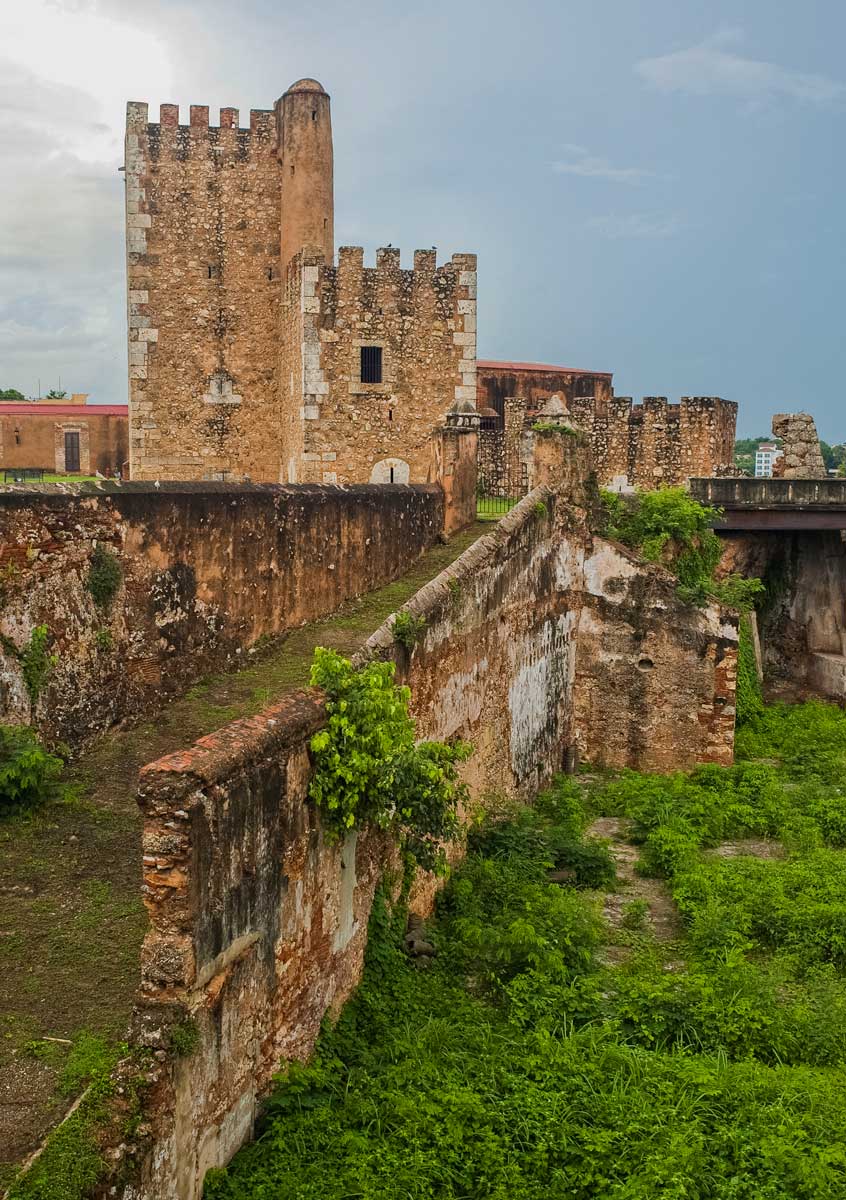History & Heritage
Know Before You Go: Fortaleza Ozama
Fortaleza Ozama, Santo Domingo
Photo: Niklas Toresson / Shutterstock.com
Skirting the fort down the Paseo Presidente Billini, sandwiched between the Ozama River and the fort itself, you can’t help but crane your neck up at this huge, towering symbol of colonial Spanish domination in the Dominican Republic. This is the Fortaleza Ozama.
Built in 1502, Fortaleza Ozama is the oldest colonial fortress in the Americas. Inside, you can climb a tower once used as a lookout for the real-life Pirates of the Caribbean, and see where Christopher Columbus once lived as a tyrant and was ultimately imprisoned for his crimes.
Situated in the historic Colonial Zone of Santo Domingo, the 60ft-tall fort served as a critical military centre of power for four and a half centuries, both to defend the city from pirates and to defend brutal rulers from rebellion. The hulking ramparts are still in remarkably good repair. In fact, the fortress was so well built that it was used as a prison right up until the 1960s. After much-needed national reforms, Fortaleza Ozama was transformed into a museum and opened up for public tours.
It is taller than what you might expect for a 16th-century relic. But what you can see from this vantage point is just the outer wall of the fort. These hulking ramparts make it look much bigger than it is, and not by accident. The fort was built to intimidate the natives, and by its very size quell the thought of rebellion.
A brief history of Fortaleza Ozama
The fort was used as a military base and as the home of the Viceroys of the Indies, most famously Christopher Colombus. For about a decade around the turn of the sixteenth century, the Spanish empire granted Columbus rulership over all of the Spanish-controlled Caribbean, and he ruled as Viceroy and Governer of the Indies in Santo Domingo, the capital of the Spanish colonies on Hispaniola.
Columbus shared governance of Hispaniola with three of his brothers, and together, their rule was marked by tyranny and brutality. Accusations soon reached Spain that Columbus oversaw barbaric treatment of Hispaniola’s indigenous Taino peoples, including enslavement, mutilations and massacres, as well as mistreatment of rebellious Spanish colonists.
As Spain's first ruler in the west, and not being of Spanish origin himself, Columbus drew many complaints about forcing Spanish nobles to do manual labor in construction, exploration and gathering food. As a result, the Spanish Crown had Columbus removed as viceroy, arrested and held prisoner in Fortaleza Ozama until he could be transported in chains to Spain.
Later, Columbus was pardoned and allowed to resume his journeys to the Caribbean - just not as governor. He never returned to Santo Domingo. For an absorbing fiction based on Columbus’s journeys and his time in the Dominican Republic, have a look at the book 1492 by Mary Johnston.
After the Spanish left Hispaniola for good in 1795, Fortaleza Ozama and the island itself changed hands many times. The eastern two-thirds of Hispaniola now known as the Dominican Republic have been occupied alternately by France, Haiti and the United States. The fort was used as a military post and prison throughout centuries of changing rulership, and was still in use during the dictatorship of Rafael Trujillo. During Trujillo’s 31-year-long dictatorship, Fortaleza Ozama became infamous for the detention and torture of political prisoners. After much-needed national reforms in the 1960s, Fortaleza Ozama was transformed into a museum and opened up for public tours.

Fortaleza Ozama, Santo Domingo
Photo: e2dan / Shutterstock.com
What you’ll see
Fortaleza Ozama stands where the Ozama river runs into the Caribbean Sea, and visitors can climb 60ft to the rooftop lookout of Torre del Homenaje (Tower of Homage), once used to look out for the real-life Pirates of the Caribbean. Looking down from the tower, you’ll see two rows of canons dating to the sixteenth and seventeenth centuries - Santo Domingo’s first line of defense against invading armies and pirates alike.
Today, though, there’s no pirates in sight. Instead, a climb up the tower will reward you with 360-degree views of the city. It’s a great vantage point to reflect on the legacy of colonial rule, looking out a modern city made up of people of Taino, Spanish and African heritage who united to declare themselves an independent nation.
Inside the fortress, visitors can stand in the very place where Columbus and his brothers condemned dissidents to death and dismemberment, the same place Columbus himself would ultimately be imprisoned. You’ll also see the squat, windowless El Polvorín (the Powder House), added to the fortress during the 1700s. Over the door to El Polvorín, look out for the statue of the patron saint of artillery, St Barbara. Outside on the fortress grounds, you’ll find a bronze statue of Spanish military historian Gonzalo Fernández de Oviedo, who was in charge of the fortress for a while during the 1500s.
Getting there
Fort Ozama is located on Calle de las Damas in the Colonial Zone of Santo Domingo. The fort is open daily from 9:00 AM to 5:00 PM, except on Thursdays, Sundays, and Mondays. The entrance fee is 70 pesos (roughly US $1.35) and multilingual guides charge about 200 pesos (US $3.75) for a twenty-minute guided tour. Photography is allowed. To find out about cultural events at the fort, check the Dominican Republic's Ministry of Culture mobile app MiCulturApp.
*Note that all indicative costs in US dollars were accurate at the time of writing based on an exchange rate of US $1 = 53.14 DR pesos
Find Fortaleza Ozama
Categories
[categories_for_post id='article-related-categories']
Tags
[tags_for_post id='article-related-tags']
Share
Written by G. Abdullah.
Published December 2020
Dominican culture and customs: know before you go
Fruit seller in Constanza
Photo: Mikkel Ulriksen
Looking for some cool things to do?
Subscribe to our newsletter
Get more travel inspiration, tips and exclusive offers sent straight to your inbox
[yikes-mailchimp form=”1″]
